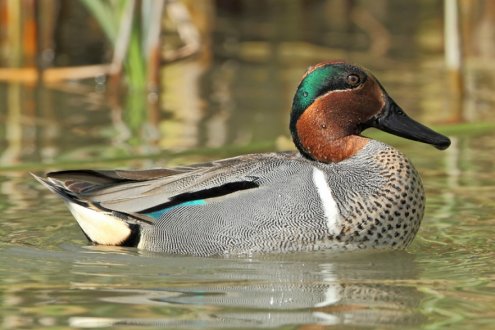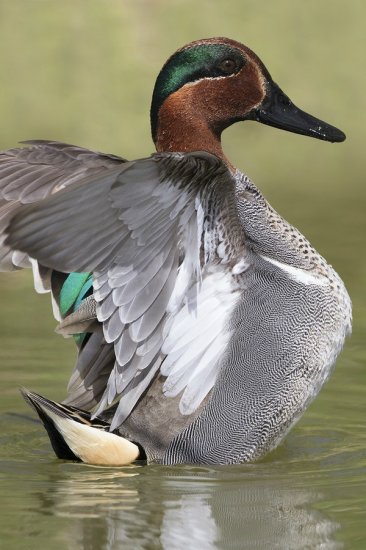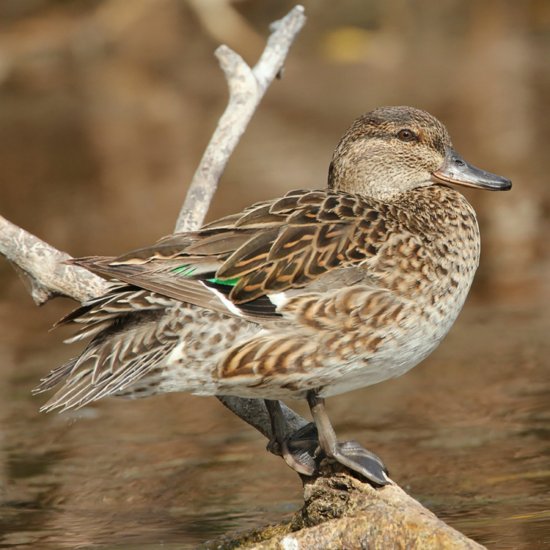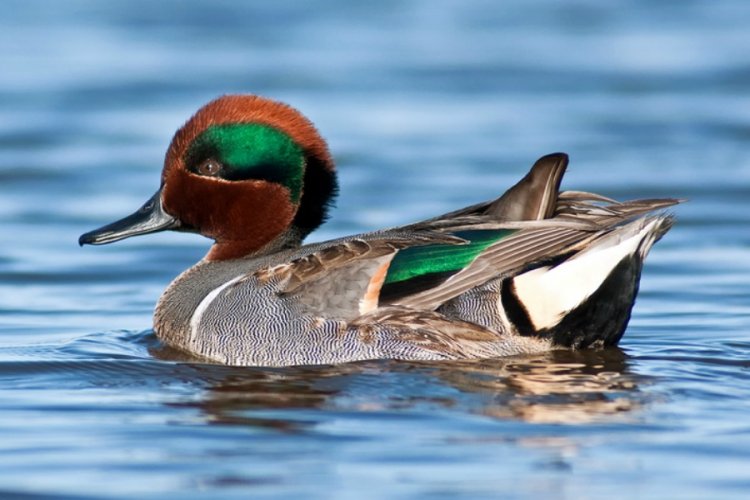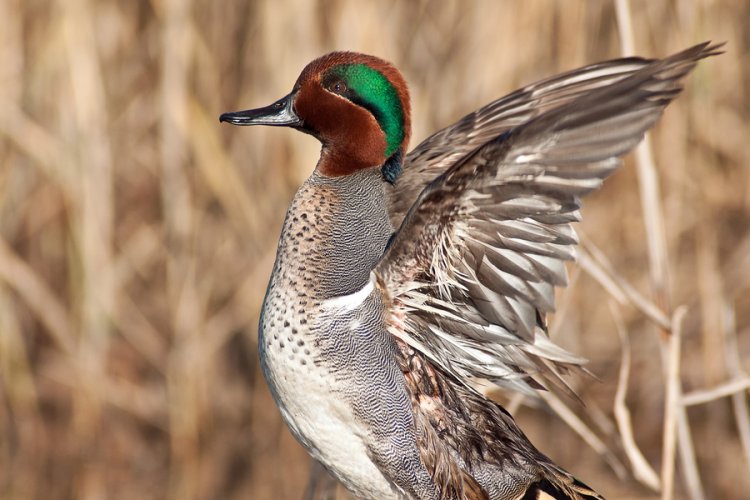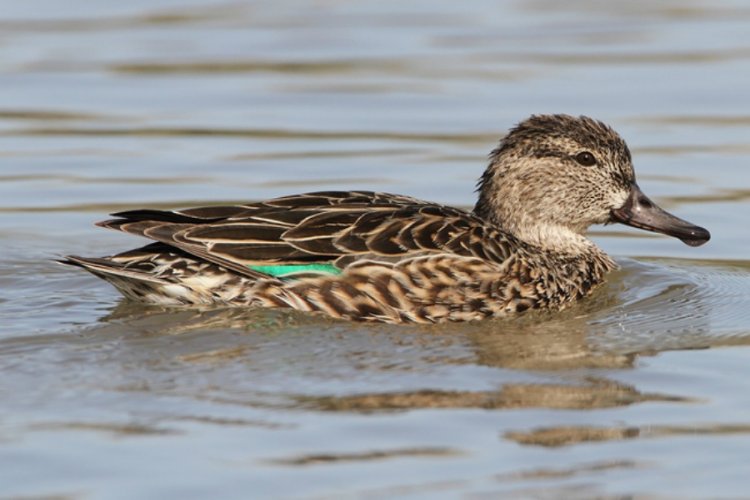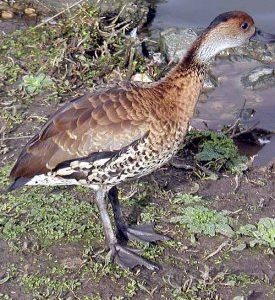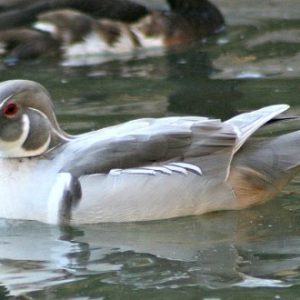The Green-Winged Teal, Anas carolinensis, is the smallest dabbling duck native to North America.
Green-Winged Teal are agile on the ground and in water as well as in the air. Males are strikingly colored with bright, metallic-green speculum feathering as well as a deep green band across the head and over the eyes. Males also have chestnuts coloring over the top and lower part of the heads, a slate black bill, and elaborate barring and vermiculation over their sides and back. Legs and feet are gray. From afar, males will appear mostly light gray, with the dark head, buff-colored upper breast, and a bright white slash along the side of the breast. Females could be mistaken for small mallards, as they are duller and far less striking than the males, as is usual with ducks from Northern climates. Males in eclipse are colored similarly to the females.
Range: commonly found almost over all of North America.
Habitat: Green Winged Teal are most often found in open fields, woodlots, brush, mudflats, and agricultural areas near water. These are ducks of mixed prairie and wetland.
Status in the Wild: common
Status in Aviculture: popular
Breeding: Green Winged Teal begin their breeding season in early spring. They are solitary nesters and pairs are monogamous. They nest on the ground, preferring a covered and secluded spot. Sometimes they will make use of a nest box. Successful breeding often occurs in their first year. Clutch size is 6-12 eggs; incubation is 22-24 days. Ducklings are hardy, usually quite tame, and easy to raise. Female tends them, but they start eating on their own almost immediately.
Lifespan: Green Winged Teal can live 20-30 years.
Size: Green Winged Teal are tiny ducks and can be as small as 11 ounces. They measure 12-16 inches in length.
Housing Requirements: Because of their extremely small size, Green-Winged Teal can easily fit through two-inch openings in aviary wiring. Except for this, they are easy to keep and breed in captivity. Green-Winged Teal are cold-hardy and are usually very compatible with other species of waterfowl. Just be careful that other larger species don’t bully these tiny ducks. The aviary or enclosure will also need to be covered as these ducks do fly. And be sure to provide adequate protection against predators.
Diet: Green Winged Teal forage in shallow water by tipping up, and they also feed on land. The diet is mostly vegetarian. An 18% protein commercial duck or waterfowl diet is recommended in captivity.
Miscellaneous Notes: Green Winged Teal are the most agile flying duck in North America – able to wheel and bank in the air, together in a compact flock, in a manner reminiscent of rock doves.

